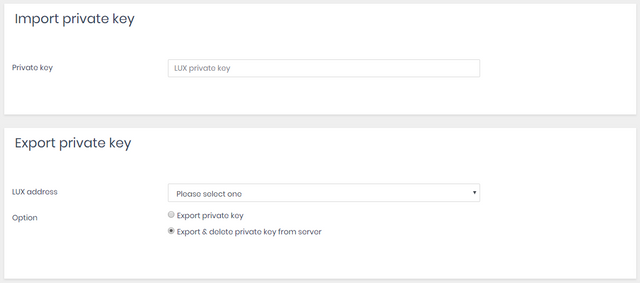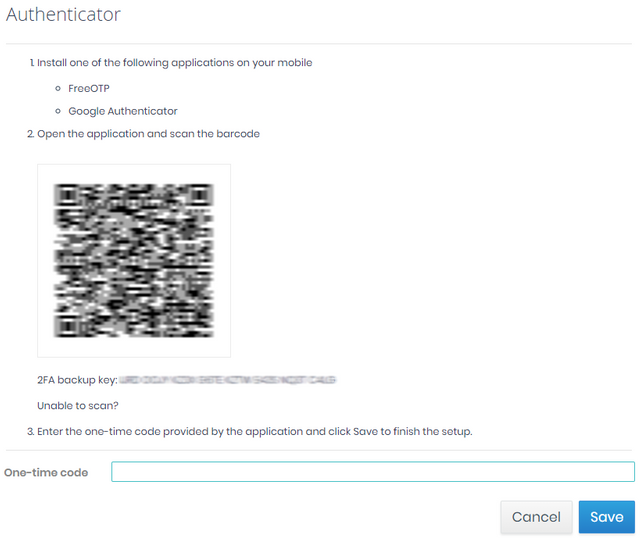Luxcore’s Proof of Stake web wallet: The first of its kind
“So actually, I started mining Lux one week after it was launched and it was really fun, because it was the first time that my rig did not crash every day (like it did with Eth or any other coin), and also the power consumption and heat generation were much lower. That was the moment when I knew that I wanted to give something back to this great project.”
To many of you, that probably sounds familiar. Something you might have said to yourself or to a friend; something maybe you heard from someone else. I know I had that exact same feeling at one point. In fact, these were my exact words when I was first invited to be part of the Lux moderation team: “Lux has done a lot for me already, I totally support the project, so why wouldn’t I be willing to do my part to help make Lux as good as it can be?”
But those words in the first paragraph weren’t mine; they were uttered by Cheaterflums | Sebi, otherwise known as Sebastian Berger, and the end result of his resolve to give back is the first-of-its-kind Luxcore Proof-of-Stake web wallet.
I want to make something completely clear. Lots of projects have web wallets. Some of them have easy-to-use interfaces; some of them support advanced functionality; some of them look amazing; some of them are protected by high-grade security features. But very few of them do it all, and absolutely none of them can stake.

The elegant and sophisticated Lux web wallet dashboard
The idea of a staking web wallet for Lux came straight from the top. After Sebi had his inspirational moment, he set to work on a web wallet for Lux straight away. He showed what he had put together to the Lux team, who were immediately impressed, but of course the first thing 216k155 asked was, “Can it stake too?”
At the time, it couldn’t. In fact, no web wallet ever built could. But Sebi, undeterred, said he would think of something. Within 10 minutes, Sebi had one of those “Aha!” moments and set to work on designing the world’s first staking web wallet. He implemented the code he thought would work and then sat there, watching, waiting, hoping for that first stake reward to hit. Eventually, obviously, it hit and as the saying goes, “The rest was history.” But it was actually just the beginning.
First, there was some internal discussion about whether or not a staking web wallet was desirable in the first place. You see, Proof of Stake block rewards are an incentive for network actors to keep full copies of the blockchain on always-connected nodes, which support network decentralization. However, a web wallet doesn’t do that. Luxcore CTO Brian F. (Bfons) explained what was done to address this shortcoming: “Because of the centralization [a web wallet] can cause, the decision to spread the web-based wallet over a large number of nodes was made in order to ensure PoS was indeed supporting the network.”

Luxcore’s rather dapper web wallet team, L to R: Sebastian Berger, Brian F. and Zach Forsyth
In order to accomplish this, the Luxcore web wallet leverages the vast Amazon Web Services (AWS) network and is hosted across many parallel nodes. While this does not provide the same degree of decentralization that client wallets and daemons do, it does represent a significant improvement over the traditional uni-node implementation of a web wallet.
The calling card of a web wallet is ease-of-use. But all too often, easy-to-use technology is associated with a security tradeoff. The parallel-node implementation of the Lux web wallet contributes directly to its security, as there is no single hardware point of failure. Furthermore, as Sebi describes, “Every part of the architecture is as separated and stateless as possible for less of a security threat.” This means that each wallet-hosting node is isolated and the number of wallets per node is limited. In addition, each node features customized firewalls to control for port security, VPC peering connections, Internet gateways and private subnets. All of the security measures that protect the web wallet network and architecture have been thoroughly audited in a process overseen by Luxcore’s own Cyber Security Specialist, Zach Forsyth (ZZer00).
One of the more revolutionary security features of the Lux web wallet is that users retain total control of their private keys. Users can import and export a private key directly with the web wallet instead of sending funds wallet-to-wallet, thus saving on network fees. More importantly, though, when users are done using a web wallet address, they can export and delete the private key from the server.

Private key import/export functionality
Development of Luxcore’s first-of-its-kind staking web wallet is far from complete. More efforts to bolster security and refine ease-of-use are underway based on the external user feedback that is constantly being logged and analyzed. In particular, the Lux team wants to achieve feature parity with the web wallet so that it operates seamlessly alongside the wallet daemon API and the upcoming Luxgate API. Some of these advances are likely to include social logins, transactional 2FA, and of course Smart Contracts. Also, further development of the newly-released Luxcore Android mobile wallet, which ties in directly with the web wallet, is forthcoming.
You might remember, though, from my last blog entry that Luxcore CEO Brian Oliver (2cryptoGuyz) had this to say about the web wallet: “That will be our first real product that we can then sell to other projects.” So how close is the web wallet to actually being marketed and monetized?
“We have a couple customers we have defined who we will target once we’re ready,” says Bfons. “Beyond that, we’re entering uncharted waters.” Based on the multi-node infrastructure of the web wallet, it can scale up indefinitely to accommodate huge projects with many thousands of users spread across a wide geography. It can also, though, scale down for tiny projects with few users who may only wish to run it on a single node, maybe even a home server. “It can,” confirms Bfons, “but that’s not our market focus.”

Pro tip: Use a strong password and enable 2FA
So, dear reader, what do you need to know before using Luxcore’s Proof-of-Stake web wallet? Sebi reminds users, “Always use a very strong password and make sure 2FA is enabled.” Bfons also encourages users to “be attentive to phishing attempts” – this means paying close attention to the website URL and making sure it matches the real website you are attempting to visit. And finally, I’d like to remind users that a block reward change is coming for Proof of Stake soon. Currently, Proof of Stake rewards are split 60% to the staker / 40% to the masternode network. This ratio will soon change to 80% staker / 20% masternodes so that stakers receive 0.8 Lux per block.
It started out as one user’s desire to give something back to the project. Today, the Luxcore web wallet is the most technologically sophisticated and secure web wallet in existence, and the only one to ever support Proof of Stake. So if you have an idea for the Lux project, do what Sebi did: talk to the Lux team today!